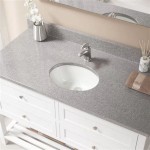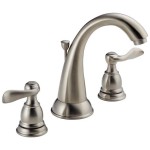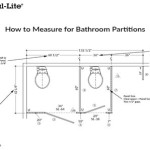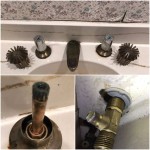How to Install A Broan Bathroom Exhaust Fan
Installing a Broan bathroom exhaust fan can significantly improve indoor air quality by removing excess moisture, odors, and pollutants. A properly installed fan prevents mold growth, protects bathroom fixtures, and contributes to a more comfortable living environment. This article provides a detailed guide on how to install a Broan bathroom exhaust fan, covering essential planning, preparation, and installation steps.
Assessing the Existing Setup and Choosing the Right Fan
Before beginning the installation process, a thorough assessment of the existing bathroom setup is critical. This includes evaluating the current ventilation system, if any, and determining the optimal location for the new fan. Consider factors such as bathroom size, usage frequency, and existing electrical wiring.
Determining the Correct Fan Size: The capacity of a bathroom exhaust fan is measured in cubic feet per minute (CFM). To determine the appropriate CFM for your bathroom, calculate the square footage of the room (length x width). A general rule is to allow for 1 CFM per square foot. For bathrooms larger than 100 square feet, or those with features like a whirlpool tub or enclosed shower, consider using a higher CFM fan. The Home Ventilating Institute (HVI) provides detailed recommendations for CFM requirements based on bathroom features and usage.
Selecting the Right Fan Model: Broan offers a wide range of bathroom exhaust fans with varying features and functionalities. Consider factors such as noise level (measured in sones), energy efficiency, and additional features like integrated lights, humidity sensors, and Bluetooth speakers. Ensure the chosen fan model is compatible with the existing electrical system and meets local building codes.
Evaluating Existing Wiring and Ductwork: Examine the existing electrical wiring to ensure it meets the fan’s voltage and amperage requirements. In most cases, a dedicated 120-volt circuit is necessary. If no wiring is present, a qualified electrician should install a new circuit. Inspect the existing ductwork, if any, to ensure it is in good condition and properly sized for the new fan. If the ductwork is damaged or undersized, it should be replaced to ensure proper airflow.
Gathering Necessary Tools and Materials
Having all necessary tools and materials readily available will streamline the installation process and minimize potential delays. This preparation includes assembling the correct safety equipment and ensuring all components are compatible.
Essential Tools: The following tools are typically required for installing a Broan bathroom exhaust fan:
- Safety glasses
- Work gloves
- Dust mask
- Screwdrivers (Phillips and flathead)
- Wire strippers/crimpers
- Electrical tester
- Pencil
- Tape measure
- Stud finder
- Drywall saw or utility knife
- Drill with appropriate drill bits
- Level
- Duct tape or foil tape
- Caulk gun
Required Materials: In addition to the fan itself, the following materials may be needed:
- Electrical wiring (if new wiring is required)
- Wire connectors
- Ductwork (if replacing existing ductwork)
- Duct connector
- Mounting hardware (screws, brackets)
- Caulk
- Insulation (for sealing gaps)
Safety Precautions: Prioritizing safety is paramount throughout the entire installation process. Always turn off the power to the circuit at the breaker box before beginning any electrical work. Wear safety glasses, gloves, and a dust mask to protect yourself from debris and electrical hazards. Double-check all connections to ensure they are secure and properly insulated.
Step-by-Step Installation Procedure
The installation process can be broken down into several key steps, starting with removing the old fan, preparing the opening, wiring the new fan, and installing the ductwork. Each step requires careful attention to detail to ensure a safe and effective installation.
Removing the Old Fan (If Applicable): Before installing the new fan, any existing fan must be carefully removed. Turn off the power to the circuit at the breaker box. Remove the fan cover and disconnect the electrical wiring using wire strippers. Unscrew or unclip the old fan housing from the ceiling. Gently lower the fan assembly and remove any remaining mounting hardware. Be mindful of any dust or debris that may fall from the ceiling.
Preparing the Opening: If installing a new fan where no opening exists, use a stud finder to locate the ceiling joists. Mark the desired location for the fan, ensuring it is centered between the joists and has sufficient clearance. Use a drywall saw or utility knife to cut the opening to the appropriate size, following the manufacturer's specifications for the new fan. If replacing an existing fan, verify that the opening is the correct size for the new model.
Wiring the New Fan: Connect the electrical wiring to the new fan, matching the wires according to their color codes. Typically, black wires connect to black wires (hot), white wires connect to white wires (neutral), and green or bare copper wires connect to green or bare copper wires (ground). Use wire connectors to secure the connections and ensure they are properly insulated. Double-check all connections to ensure they are tight and secure. Use an electrical tester to verify that the wiring is correct before restoring power to the circuit.
Installing the Ductwork: Connect the ductwork to the fan’s exhaust port using a duct connector. Secure the connection with duct tape or foil tape, ensuring a tight and airtight seal. Run the ductwork to an exterior vent, following the shortest and straightest path possible. Avoid sharp bends or kinks in the ductwork, as these can restrict airflow. Insulate the ductwork to prevent condensation and heat loss, especially in unconditioned spaces like attics.
Mounting the Fan Housing: Position the fan housing into the prepared opening and secure it to the ceiling joists using screws or mounting brackets. Ensure the fan housing is level and flush with the ceiling surface. Tighten all screws securely, but avoid overtightening, which could damage the drywall. Some fan models may require additional support brackets or straps to ensure stability.
Installing the Fan Cover and Testing: Once the fan housing is securely mounted, install the fan cover. Connect the cover to the housing according to the manufacturer's instructions. Restore power to the circuit at the breaker box. Turn on the fan and verify that it is operating correctly. Check for any unusual noises or vibrations. Ensure that the fan is effectively removing air from the bathroom. If the fan has additional features like lights or humidity sensors, test these functionalities as well.
Addressing Potential Issues and Troubleshooting
Even with careful planning and execution, unforeseen issues may arise during the installation process. Knowing how to troubleshoot common problems can help ensure a successful outcome.
Fan Not Turning On: If the fan does not turn on after installation, verify that the power is turned on at the breaker box. Check the wiring connections to ensure they are secure and properly connected. Use an electrical tester to confirm that power is reaching the fan. If the fan still does not turn on, it may be defective and require replacement.
Excessive Noise: Excessive noise can be caused by several factors, including loose mounting screws, unbalanced fan blades, or restricted airflow. Check the mounting screws to ensure they are tight. Inspect the fan blades for damage or debris. Verify that the ductwork is not kinked or obstructed. If the noise persists, the fan motor may be defective.
Insufficient Airflow: Insufficient airflow can be caused by undersized ductwork, restricted airflow, or a damaged fan motor. Check the ductwork to ensure it is properly sized and free of obstructions. Verify that the exterior vent is not blocked by debris. If the airflow remains insufficient, the fan motor may be failing and require replacement.
Condensation Issues: Condensation issues can occur if the ductwork is not properly insulated or if the fan is not adequately removing moisture from the bathroom. Insulate the ductwork to prevent condensation. Ensure the fan is sized appropriately for the bathroom and is running for a sufficient amount of time after showering or bathing. Consider installing a fan with a humidity sensor to automatically control ventilation.
Electrical Issues: If you encounter any electrical issues, such as sparking or tripping breakers, immediately turn off the power to the circuit and consult a qualified electrician. Do not attempt to repair electrical issues yourself if you are not experienced in electrical work.
By carefully following this guide and taking necessary precautions, homeowners can successfully install a Broan bathroom exhaust fan and improve the air quality in their bathrooms. Remember to consult local building codes and regulations before beginning any installation work. If you are unsure about any aspect of the installation process, it is always best to consult a qualified electrician or HVAC professional.

Broan Nutone Invent Bath Fan Installation

Remove Install A Bathroom Fan Grille In 1 Min

How To Install Bkr60 Broan Nutone Bath Fan Upgrade Kit

Broan Nutone Flex Series 80 Cfm Ceiling Mount Room Side Installation Bathroom Exhaust Fan Energy Star Ae80b The Home Depot

How To Clean Replace Light Broan Model 678 Exhaust Fan

Costco Broan 80 Cfm Cst80sl Bathroom Fan Wiring

What You Need To Know About Installing A Broan Nutone Exhaust Fan Williams

Broan Nutone 110 Cfm Bathroom Exhaust Fan With Led Lighted Cleancover Grille Energy Star Ae110lk The Home Depot

Broan Nutone Easy Install Bathroom Ventilation Fan Replacement Grille In White Fgr101s The Home Depot

Broan Nutone 60 Cfm Quick Install Bathroom Exhaust Fan Motor And Grille Upgrade Kit Camperid Com
Related Posts







